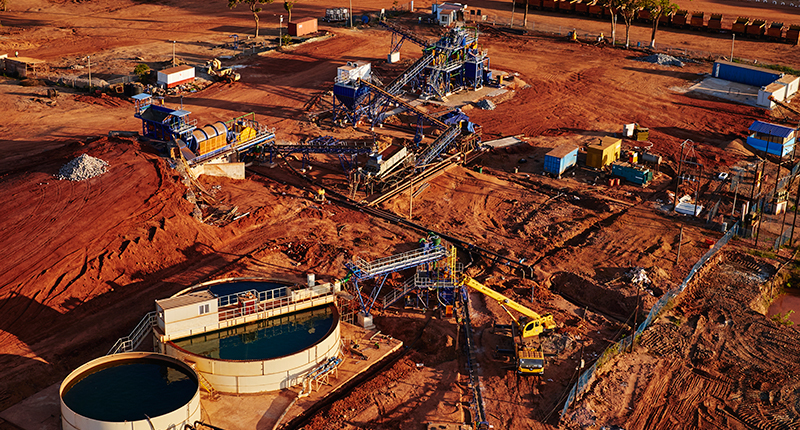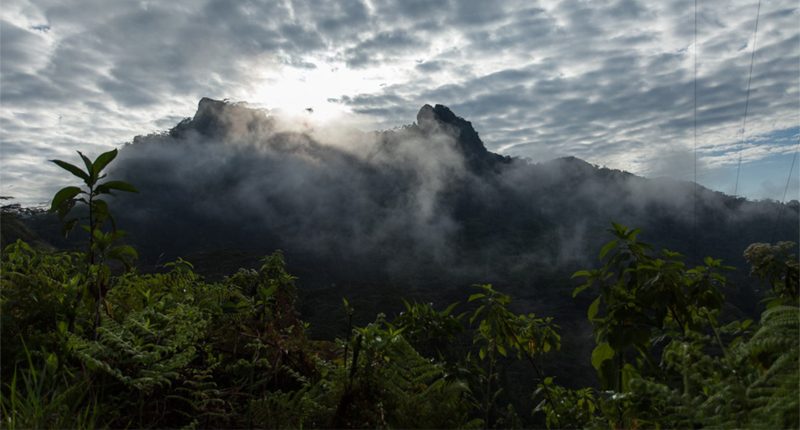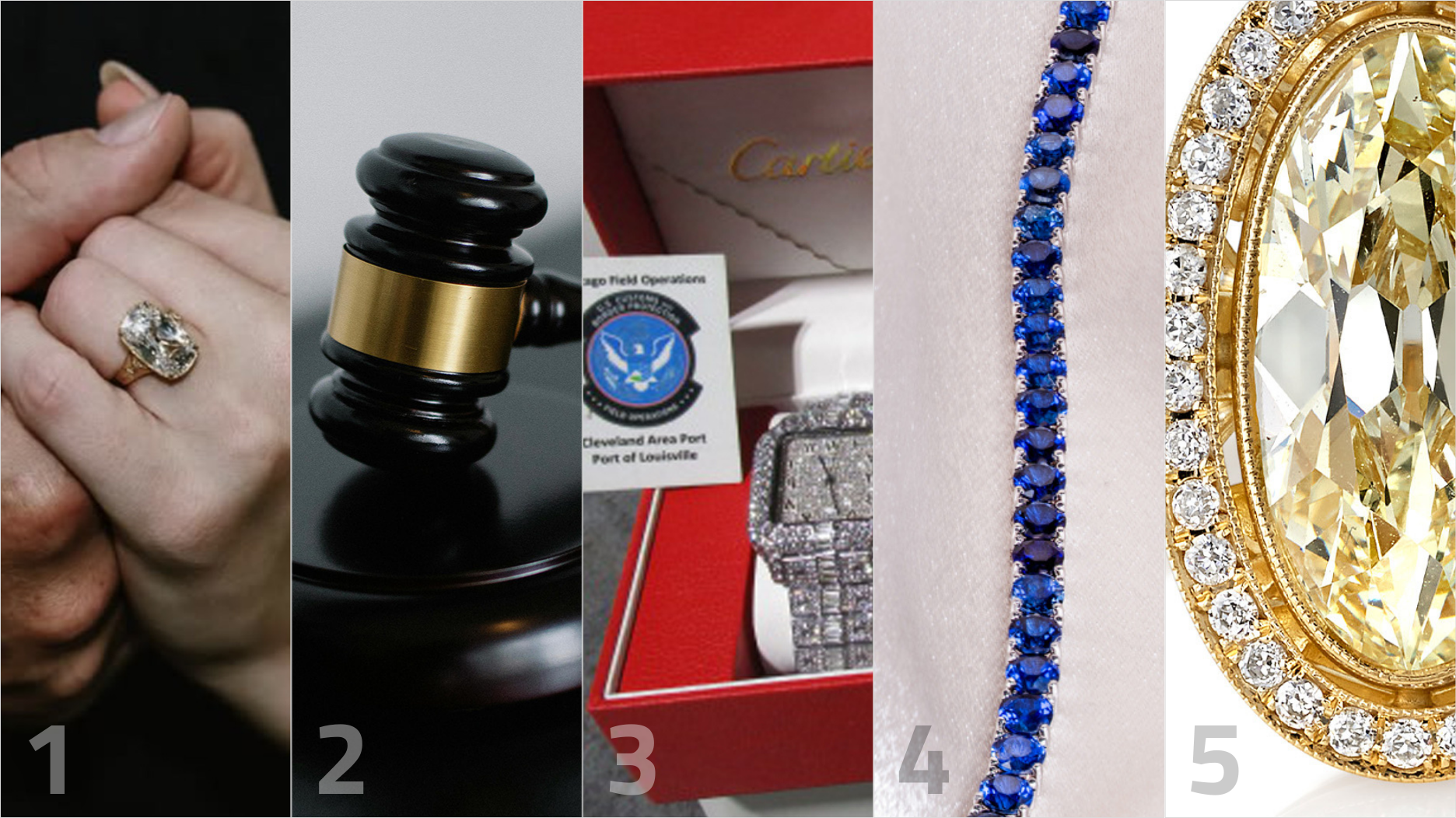Linda Coutu is rejoining the precious metals provider as its director of sales.
6 Important Developments in the Gem Market This Year
Supply chain developments, gemstone trends and movements from the biggest players shaped the colored gemstone sector in 2017.

The colored gemstone sector can change so quickly, and a year can bring many new developments that alter the landscape of the market.
This year seemed to bring even more stories about shifts in the supply side, whether that be a focus on ethical sourcing, or new sources or companies entering the game.
Here are some of the most notable developments that impacted the colored gemstone market in 2017.
1. Responsible sourcing.
This has carried over from 2016, but I think responsible and sustainable sourcing remains one of the biggest, and most complicated, stories for the gemstone sector right now.
With today’s socially conscious consumer, it’s a conversation the industry has to be a part of, and is something many already have been practicing. But the colored stone sector is vast and largely artisanal, meaning there are a lot of players and that no one solution can be applied across the board.
Still, the industry seems to be moving in the right direction, as many more conversations are being had and more action is being taken. It’s one I think everyone should keep track of and will be really interesting as it develops.
2. The Gemfields takeover.
The takeover of Gemfields by its largest investor, Pallinghurst, took months to unfold but was interesting to watch.
The initial offer from the company was unsolicited, and throughout, Gemfields was telling its shareholders not to take action and then, at one point, advised them to approve a takeover bid from a second player that had entered the bidding game.
Pallinghurst ultimately reached the required amount of approvals from shareholders and, once the integration was complete, began immediately to take action, cutting staff and closing offices in order to reduce the company’s debt and increase revenue. I think it’ll be interesting to see where one of the market’s largest players takes its business. I, for one, can’t wait to see what comes of its Ethiopian emerald project. 
3. A return to American gems.
This year seemed to include a lot more conversation around American-sourced gemstones; supply and demand are both up, though from a smaller base.
The gems are perfectly positioned in the market, offering the socially conscious consumer mine-to-market tracing and an American product, and for younger couples they offer both a lower price point and a unique stone for an engagement ring.
In
I’m excited to see where the market for these stones heads in 2018.
4. Supply chain developments.
The colored stone market is constantly in flux in one area: supply. Writing stories about what’s happening on the ground at gem sources are among my favorite as I find it fascinating, and 2017 provided a number of interesting developments in that area.
Fura Gems (formerly Fura Emeralds) came on strong, announcing it had purchased the well-known Coscuez emerald mine in Colombia, with plans to modernize the extraction process and gradually increase production. Not long after came news that the company also had completed its acquisition of four ruby mining licenses in Montepuez in Mozambique.
Then there was Mustang Resources, whose Mozambican rubies hit the market for the first time at auction in Port Louis, Mauritius. (It is worth noting, however, that the company called those results “disappointing,” and said it would use market research to increase the quantities of rubies most in demand for the next auction).
This year also saw the first rubies from Greenland, a project long in development, finally come to market. Though there isn’t a ton available yet and their value and pricing still are being figured out, it’s always interesting when a new source comes online.
And though Ethiopian emeralds really first really started producing in late 2016, the material started showing up more and more throughout 2017, providing a new source of the popular green beryl.
Meanwhile, while Gemfields initially had planned to get into Colombian emeralds and Sri Lankan sapphires, which would’ve marked its first foray into the corundum, the colored gemstone miner pulled out of both, opting instead to focus on its African projects.

5. The launch of new labs.
One interesting thing I noticed this year was more news about new gem laboratories.
Early in the year, we reported that the Gübelin Gem Lab was opening its first location in New York.
Then in June, the Federated International GemLab launched in association with the International Colored Gemstone Association in Bangkok. There also was the launch of Danat in Bahrain.
When I talked to ICA Executive Director Gary Roskin about the opening of FIG this summer, he said that rather than trying to compete with the existing labs, they aimed to aid a market in which reports were in high demand. He said: “With the number of treatments that are possible and the detection of them no longer a simple desk gemology test, we need professional gem laboratories.”
I think his point is valid, especially in an industry that is fighting for a positive consumer sentiment and in which disclosure is a hot topic.
But I also think it points to a reliance on lab reports, just as GemWorld International’s Richard Drucker brought up during a seminar in Tucson this year, and the concerns that come with that: nomenclature and origin.
In regards to the first, issues arise for some in the colored stone market when it comes to a lack of consistency and codification in naming standards from lab to lab.
With the latter, the reliance on an identification of place of origin is having a big effect on prices. And as so many new sources pop up, there are risks of inconsistencies.
6. Museums and their increasing importance.
Another development I noticed this year, and one that I hope to examine further in the New Year, is that the amount of conversations about our country’s gem museums is increasing.
The American Museum of Natural History announced a two-year renovation that will see a complete redesign of its gem and mineral halls, and the Arizona Mining and Mineral Museum, shuttered in 2011, will reopen after getting funding from the state. It will be under the University of Arizona’s ownership.
I’ve been so excited by a lot of this news, and I think the story told by one of the speakers, Alexander Schauss, CEO at the scientific and regulatory consulting company, AIBMR Life Sciences, and collector of thumbnail-sized minerals, at this year’s Yale Mineral and Gem Symposium helps explain why this is happening. (Of note: The event was held in the Peabody Museum’s new David Friend Hall of Gems, which opened in fall 2016 and was funded by a donation from an alumnus.)
Before the speaker got into his presentation, he talked about growing up in New York City’s Upper West Side, which, at that time, was nothing like it is today. He found his way to the AMNH and, somehow, met the curator of the mineral and gem halls, returning again and again as it provided a safe place to hang out and kicking off a lifetime friendship and love for collecting and studying minerals and gems.
Now, while it won’t always be a story like that, I think it’s so important that kids across the U.S. have the chance to be exposed to the fascinating materials that make our industry go round and to find their passions. It’s important for the future of our industry, and all of these recent museum renovations and developments designed to expose more to them can only help.
The Latest

The Signet Jewelers-owned store, which turned 100 last year, calls its new concept stores “The Edit.”

The supplier has a curated list of must-have tools for jewelers doing in-house custom work this year.

How Jewelers of America’s 20 Under 40 are leading to ensure a brighter future for the jewelry industry.

Footage of a fight breaking out in the NYC Diamond District was viewed millions of times on Instagram and Facebook.


The governing board welcomed two new members, Claire Scragg and Susan Eisen.

Sparkle with festive diamond jewelry as we celebrate the beginning of 2026.

Roseco’s 704-page catalog showcases new lab-grown diamonds, findings, tools & more—available in print or interactive digital editions.

The master jeweler, Olympian, former senator, and Korean War veteran founded the brand Nighthorse Jewelry.

In its annual report, Pinterest noted an increase in searches for brooches, heirloom jewelry, and ‘80s luxury.

Executive Chairman Richard Baker will take over the role as rumors swirl that a bankruptcy filing is imminent for the troubled retailer.

Mohr had just retired in June after more than two decades as Couture’s retailer liaison.

Shekhar Shah of Real Gems Inc. will serve as president of the Indian Diamond & Colorstone Association in 2026.

This year’s good luck charm features the mythical horse Pegasus, and is our first Piece of the Week of the new year.

As part of the leadership transition, Sherry Smith will take on the role of vice president of coaching strategy and development.

It marks the third time the country has headed the Kimberley Process. Ghana will serve as vice chair.

The new Bulova x Stetson designs highlight two animals often associated with the American West—the bison and the Texas Longhorn.

Its residency at Yamron Jewelers will run through May 2026.

From influential executives to innovative designers, we pay tribute to the people we said goodbye to this year.

The retailer is expanding into areas with large Indian and South Asian populations.

The Italian brand has opened its first flagship amid the peaks of the Dolomites in Madonna di Campiglio, Italy.

The new curation at the Natural History Museum of Los Angeles County showcases rare gem and mineral specimens in their uncut, natural state.

The couple pleaded guilty to concealing at least $127 million in cash transactions at its precious metals businesses.

Consumers shared concerns about prices, inflation, tariffs, trade, and politics in the survey’s write-in response section.

In February 2026, the auction house will move its headquarters to the former Steinway Hall, a neoclassical landmark on Billionaires’ Row.

The new show will take place Jan. 23-25, 2026.

The former BHP Billiton leader and Gemfields chairman is remembered for his influential leadership throughout his 50-year mining career.



























